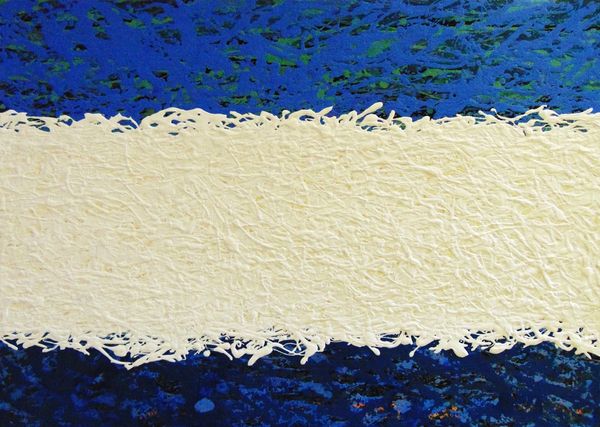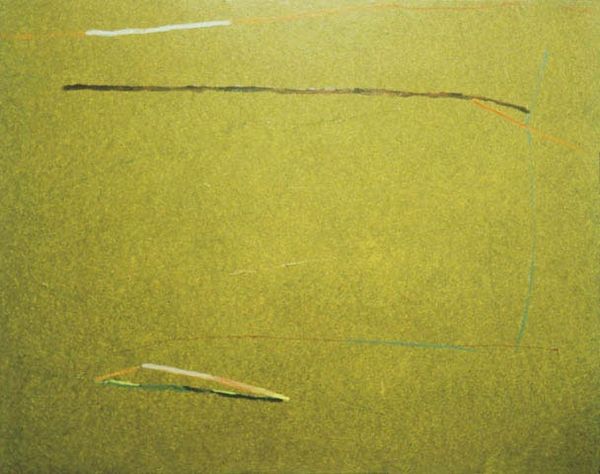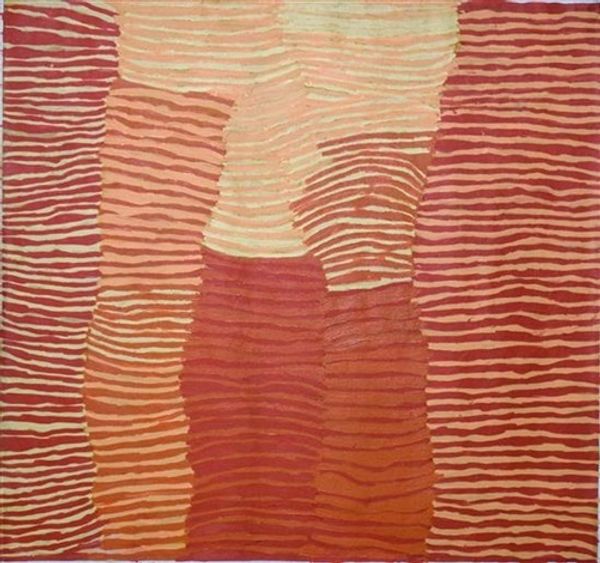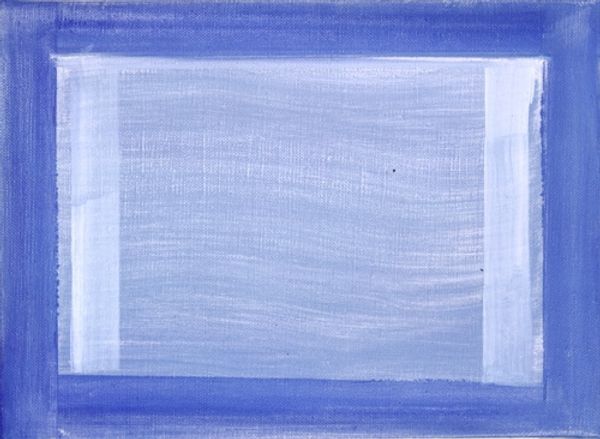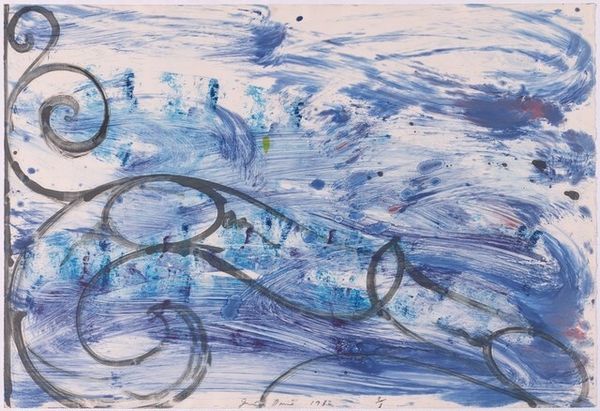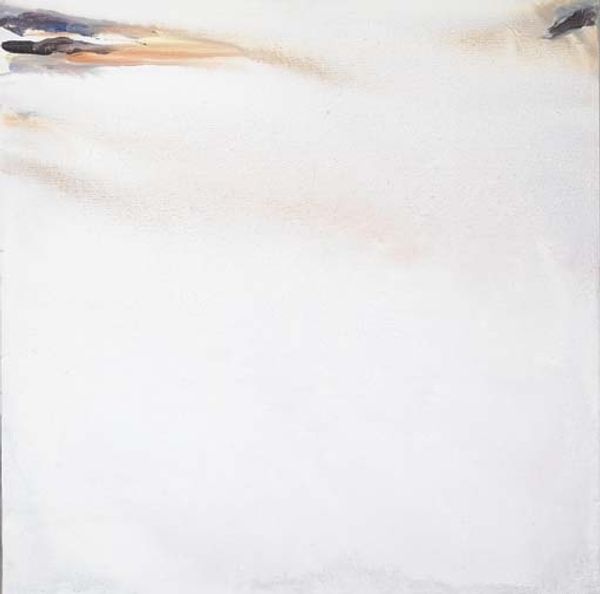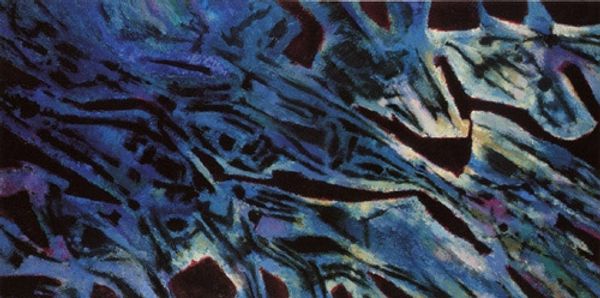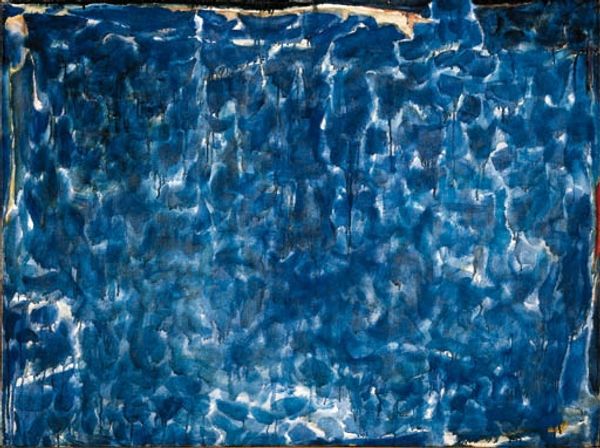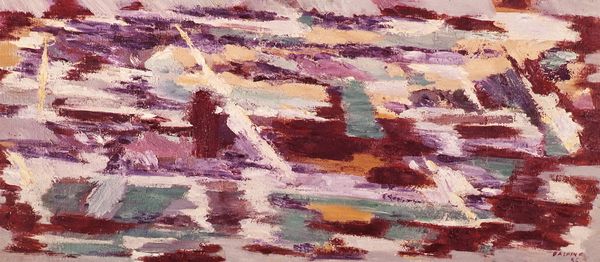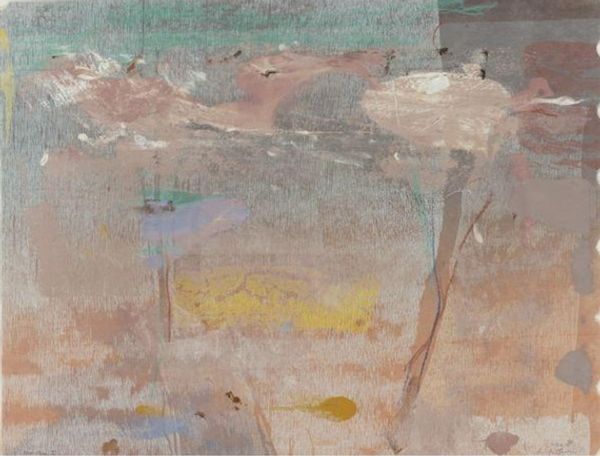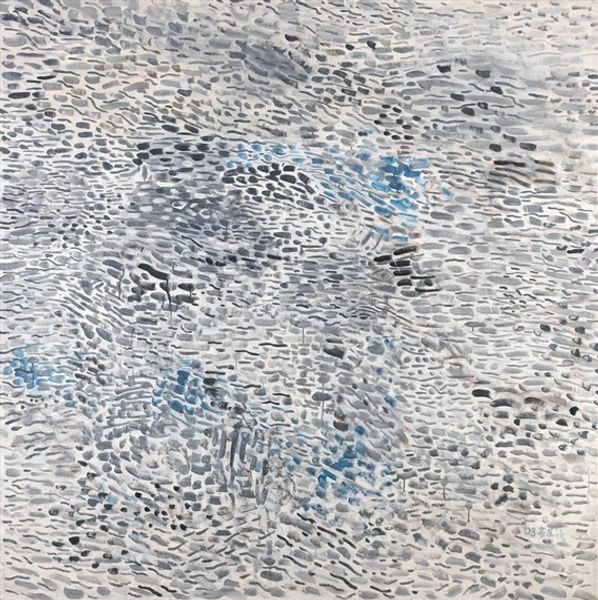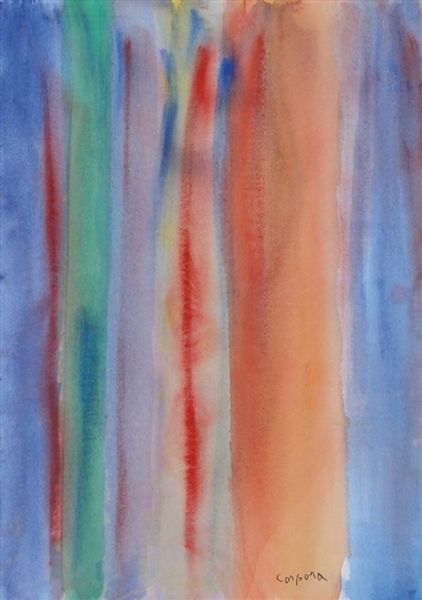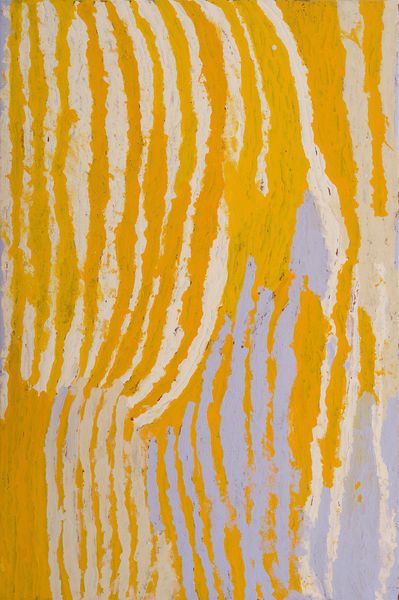
painting, acrylic-paint
#
abstract-expressionism
#
abstract expressionism
#
painting
#
landscape
#
acrylic-paint
#
abstraction
#
line
Copyright: Milton Avery,Fair Use
Curator: Looking at "Onrushing Wave," completed in 1958 by Milton Avery, one is immediately struck by its capacity to be simultaneously placid and alarming. What's your take on this depiction? Editor: I see process very clearly. The way he’s layered the paint makes me consider its texture before anything else. There’s a certain materiality at play in those short, horizontal strokes. It’s as though the surface itself becomes the subject, rather than the ocean scene. Curator: Right, Avery was very interested in surface, particularly as a signifier of broader themes of liminality and impermanence, concepts acutely resonant post-war. If we examine how gender is evoked through its formal abstraction of nature, for example, how do these elemental forms contribute to a landscape beyond heteronormative spaces? Editor: I understand the conceptual underpinning but I'm mostly captivated by how Avery coaxed depth from seemingly flat applications. Note the layers of thinned acrylic allowing the underpainting to subtly influence the final tone. How the tools themselves become agents in determining what ends up on the canvas; an aesthetic consideration first and foremost. Curator: However, we shouldn't dismiss how Avery leverages the gendered history of landscape painting. His reductive shapes actively subvert the historical convention, complicating traditionally masculine or feminine readings through color, the way that horizon acts, ultimately disrupting entrenched power dynamics by eschewing a concrete narrative, forcing us, the viewer, to reckon with preconditioned social narratives. Editor: While I appreciate those sociocultural readings, for me the primary emphasis circles back to production; his methods highlight the physical act of painting—labor. The ocean spray represented almost shorthand—achieved with deft flicks—emphasizes craft while dismantling the pretension of fine art. It is unburdened by rigid formalism, right? Curator: Precisely. By removing a figurative human element in these "waves" he destabilizes human authority. The non-depiction becomes its own act, reclaiming our spaces. He is opening possibilities of experiencing beyond societal norms and patriarchal expectations, through simple forms, the possibility for new, progressive perspectives. Editor: Absolutely, and consider, too, his engagement with color, specifically the muted tones. Through subdued blues and off-whites, the physical essence shifts from one of dramatic scene into something almost meditative. And the materiality then asks whether he offers solace from, or reminds us of, impending storms. Curator: Indeed. Reflecting on our analysis, Avery’s abstractions are far from vacant— they offer entry points for considering the political implications nested in plain sight. Editor: And, returning again to materials, the "Onrushing Wave" illustrates a captivating example of artistry born of, and reflective of, technique and labor itself.
Comments
No comments
Be the first to comment and join the conversation on the ultimate creative platform.
